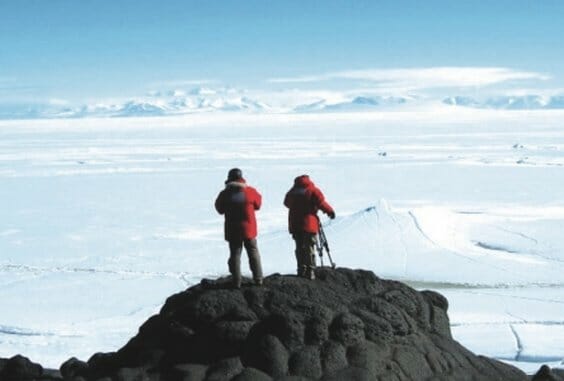
Release Date: June 11
Director/writer: Werner Herzog
Cinematographer: Peter Zeitlinger
Studio/Run Time: THiNKFilm, 99 mins.
Herzog’s Antarctica documentary leaves us cold
“The National Science Foundation had invited me to Antarctica even though I left no doubt that I would not come up with another film about penguins,” narrates acclaimed director Werner Herzog at the beginning of Encounters at the End of the World. “My questions about nature, I let them know, are different.”
But what are the questions Herzog sets out to ask? This uncertainty is both what makes the film interesting and its primary problem, as Encounters wavers from topic to topic without ever settling on a purpose. The film opens with a serene underwater shot, but this doesn’t last long before transitioning to an industrial plane and showing people traveling to Antarctica’s harsh setting.
This beginning sets the pace, as Herzog’s trip takes him from one part of the McMurdo Research Station to the next, with the director stopping intermittently to take in the scenery and local fauna. There’s no apparent rhyme or reason as to what location he visits; the local plumber and his workshop are given as much screen time as a scenic vista. Encounters is a diary of Herzog’s trip, but rather than editing out the uninteresting or unrelated parts of the journey, he seems to have thrown everything together. If the filmmaker had connections in mind, he never makes them clear.
The questions Herzog eventually asks are never fully fleshed out, either. Why do people choose to live in such an extreme environment, and what is it, exactly, that makes us human? These are big questions—especially the latter—but each is explored in a scattershot manner without enough screen time. An entire film could be made about either; instead the 15 minutes spent addressing each question never dig past the frozen surface for meaningful answers. It’s obvious that Herzog wished to separate his film from lighter fare about penguins, but the result is ambiguous and ineffective.
Encounters’ strongest moments occur when Herzog finally gets around to filming Antarctica. These sections rival anything put together by Planet Earth and, here, the film reaches transcendence. From the tops of volcanoes to the underwater depths beneath the ice, each part of the continent is more mysterious and beautiful than the last. But even while visiting the most remote parts of Antarctica, the landscape the film tours is surprisingly populated. Whatever remote corner Herzog wishes to visit conveniently houses several scientists (whom he can’t resist interviewing). And even when these people are unavailable, Herzog insists on narrating scenes rather than letting images do the talking.
The film’s main dilemma stems from its ambition. Attempting to be too many things at once, it is ultimately not a satisfying story about humanity, nor does it truly capture the mysterious natural world of Antarctica. Encounters begs a frustrating query of its own: Why did Herzog decide to make this documentary in the first place? Like many of the other questions raised by Encounters, this remains unanswered.